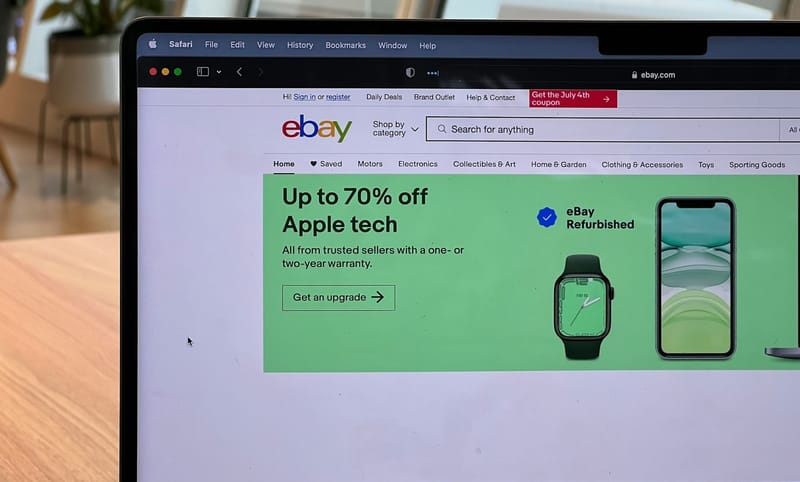Common Problems That Every E-Commerce Business Faces And Their Solutions
The rise of digitalization has changed how internet retailers run their businesses. While this has simplified the process of purchasing items for customers, it has also presented certain challenges for e-commerce businesses, such as website optimization and servicing across many digital touchpoints. In this article, we will discuss all the

The rise of digitalization has changed how internet retailers run their businesses. While this has simplified the process of purchasing items for customers, it has also presented certain challenges for e-commerce businesses, such as website optimization and servicing across many digital touchpoints.
In this article, we will discuss all the common problems that every eCommerce business faces.
To assist you, we've compiled a list of typical e-commerce issues and their potential fixes:
- Online verification of identity is necessary
- Giving customers an omnichannel experience
- Overcoming the ferocious competition
- The requirement to update sales strategies
- Abandon carts
- Preserving client loyalty
1. Online verification of identity is necessary: You need to ascertain whether a guest who registers on an e-commerce website is a genuine individual with legitimate purchasing intent. Doing this can stop automated or phoney accounts from taking your money (especially when using cash-on-delivery payment methods).
Solution: A simple solution to the problem with online payments. Use the proper methods to verify online shopper data. An email with a verification link is given to each new user who registers. With COD transactions, an automated call to the customer can be made to confirm their order. Utilize automation to find the fake contact numbers and email addresses and to confirm that pin codes match the state or city.
Of course, keep an eye out for indications of questionable behaviour. This could come in the shape of unusually large or significant value orders.
2. Giving customers an omnichannel experience: The ability to deliver a seamless omnichannel consumer experience is one of the main challenges faced by internet retailers. Customers anticipate being able to contact your brand via a variety of touchpoints, including your website, phone, email, social media, physical location, and more. These touchpoints must all be integrated.
In fact, ecomdash predicts that any company that isn't using an omnichannel shopping strategy will fall behind.
Solution: To develop a successful omnichannel strategy, consider prospective consumer needs and put the best customer experience technologies in place. To address issues of this nature in e-commerce, follow these simple steps.
- Prioritize the important channels. How do your clients get in touch with you? What TV shows do they favour?
- Add these channels together. Communicate with clients via their preferred channels by utilising customer satisfaction technology (like phone, email, live chat, video call, online help centres or in-app messaging).
- Keep the context. Past interactions should inform conversations. CX platforms' unified view characteristics may provide this capability.
3. Overcoming the ferocious competition: One of the most competitive industries is e-commerce. Customers can see a major difference when certain things vary, such as pricing, quality of service, supply chain operations, and more. One of the most difficult eCommerce difficulties is building and keeping the customer base.
For example, if one of your competitors partners with a delivery app, this could increase their market share. Even if your prices or products are better, that still stands.
Solution: Create a digital marketing plan for your eCommerce business, and conduct an in-depth marketplace and competition analysis. Spend money on promotional deals to improve your brand's visibility. It is important to remember that internet businesses with customer loyalty programmes often have 88 per cent higher profits than those who do not.
4. The requirement to revise sales tactics: Meeting and exceeding customer expectations are one of the most crucial key issues in e-commerce. Many eCommerce stores lack the required understanding of customer behaviour and purchasing habits.
Solution: You should consider marketing your products on popular websites like eBay and Amazon. These e-commerce companies already have a large network of customers, making it easier to pitch and market your goods (and determine what works and what doesn't).
5. Abandon carts: It is a significant obstacle for online retailers. It can affect even the biggest e-commerce companies.
For example, when Nordstrom, a major traditional brick-and-mortar retailer, launched an e-commerce platform, they saw significant e-commerce sales opportunity losses due to abandoned carts. Consumers were abandoning their purchases in the middle of the lengthy and bug-filled checkout procedure. This e-commerce issue cannot be disregarded.
Solution: To make checkout a simpler two-step procedure, Nordstrom had to build a new checkout layout.
Also, think about revamping your shopping cart. Eliminate bugs and excessively long process of checkout. Provide instant assistance tools that clients can employ if they run across problems. Using visual aids throughout the checkout process might also assist in answering customer questions. For instance, if a client needs assistance setting up an account, one of your agents can start a co-browsing session to walk them through the process.
Utilizing this straightforward fix can significantly increase your shopping cart conversion rate.
6. Preserving client loyalty: Your firm is doomed to failure without the trust and loyalty of your customers. But it takes a lot of work to get and keep clients.
Because the buyer and the seller are sometimes strangers and are unable to see one another, e-commerce businesses frequently struggle to gain the confidence and loyalty of their clients. Interactions become less personable as a result. The only way to overcome this e-commerce difficulty is through time and effort. The business might gradually develop this loyalty and confidence through numerous transactions.
Solution: First, ensure all of your customer service procedures—from online ordering to shipping—are efficient. Also, keep in mind the following points:
- Putting your location, contact information, staff photos, reviews from clients, and other credibility symbols on your website.
- Producing worthwhile material.
- Placing the needs of the consumer before the bottom line.
- Soliciting customer opinions.
- Loyalty program improvement.
Conclusion
Outstanding strategies are important to survive the cut-throat e-commerce competition. Be prepared to handle any e-commerce problems that may arise in the future and focus on creating a customer-first culture.
By following this culture, you will discover more about your customer's needs and deliver a memorable shopping experience while addressing their needs.






